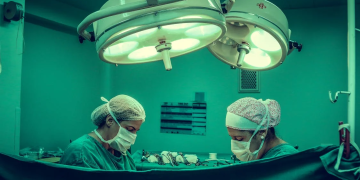
The rechristened Audrey Geisel University House is completely rehabbed and serving the purpose for which it was intended as the abode of UC San Diego’s chancellor outfitted to accommodate guests.
“It is an honor to live in Geisel House, which is much more than the Chancellor’s home,” said UC San Diego Chancellor Pradeep K. Khosla. “It’s the university’s house. I look forward to carrying on the tradition of hosting special events at the house for campus and community members, and creating new memories in the home with my family, friends and colleagues.”
The entire cost of the University House Rehabilitation Project, estimated at $10.5 million, was covered by gift funds, including major gifts from Audrey Geisel ($3 million) and the Rik and Flo Henrikson Endowment Fund ($5 million). Additionally, the UC Office of the President gifted $1.5 million from the Searles Fund, an endowment used to fund general purposes of the university, which cannot be covered by state funds.
Located on 7 acres in La Jolla Farms, Geisel House had been closed since 2004 when it was deemed uninhabitable due to seismic and system deficiencies, including plumbing and electrical problems and the need for canyon edge slope stabilization.
Ione Stiegler, the La Jolla architect who designed Geisel House’s retrofit, previously described the undertaking as “a special task for an extraordinary structure in an exquisite location.”
Stiegler said “re-creating” the dwelling was challenging.
“Chancellor [Robert] Dynes vacated the house 10 years ago and the La Jolla Historical Society was very active in getting the house nationally designated [as historical],” said Stiegler, noting the project changed originally from “demolishing the house and building an entirely new structure,” to “a restoration, rehabilitation of the existing home.”
Stiegler said the restoration project involved seismically retrofitting an unreinforced masonry building made with 2-foot-thick adobe walls.
“The ceiling and roof were not physically tied to the walls,” Stiegler said. “Our project rectified that.”
Restoring the Geisel House structure involved blending historic adobe with its thick, massive walls with modern-era architecture, Stiegler said.
“The building needed to absorb seismic waves, so part of our project was to create beams and sheer walls, then tie them to a roof diaphragm that could absorb energy cross-shocks that come from the ground in an earthquake,” she said.
Don Schmidt, vice chairman of the La Jolla Historical Society’s Preservation Committee, said the society worked on a committee in partnership with the university in devising a game plan for Geisel House’s restoration. Crediting Pat Dahlberg with being the driving force initially in convincing authorities to preserve the chancellor’s home, Schmidt said most everyone is happy with the end result.
“It’s really spectacular,” he said. “It’s just an amazing example of pueblo revival architecture. Everyone’s pleased. It’s so beautiful. There’s nothing else like it in Southern California.”
Audrey Geisel, widow of author Theodor “Dr. Seuss” Geisel, has had a longstanding relationship with UC San Diego, donating more than 8,000 of her late husband’s original drawings, sketches, books and other memorabilia to the university libraries. In 1995, the university’s library was renamed Geisel Library in honor of Theodor Geisel, following a $20 million gift from Audrey Geisel. Mrs. Geisel, who was recently awarded the prestigious UC San Diego Chancellor’s Medal, has had a lasting impact on nearly every area of the campus — from the UC San Diego Lib-raries, Scripps Ins-titution of Ocean-ography and Health Sciences, to student scholarship and fellowship support and the renovations of the Faculty Club.
The historic home was built by noted Santa Fe-based architect William Lumpkins for prominent early La Jolla developer William Black, for whom Black’s Beach is named.
The 130-acre site at 9360 La Jolla Farms Road was bought by the UC sytem in 1967 for $2.7 million to fulfill a UC policy requiring that university leaders live on or within four miles of the campus.
In July 2004, a university committee studying alternatives for University House recommended it be demolished and rebuilt. But the resultant public outcry by historians, preservationists and Native Americans who have a sanctified Kumeyaay cemetery on the Geisel House site, caused the university to rethink its position.












Discussion about this post